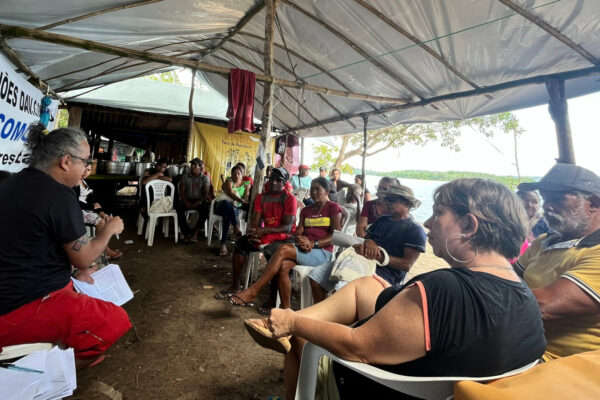This week environmental activists in Brazil – and Hollywood – are celebrating a victory over what may become the world’s third largest hydroelectric plant. A Brazilian court in Para state ruled on Friday that the state-backed project, key to President’s Dilma Rousseff’s infrastructure push to support Brazil’s continued economic growth, has not met environmental requirements and has halted construction and financing of the project in the Amazon rainforest.
Critics of the dam, including director James Cameron and star Sigourney Weaver, say that the Belo Monte dam, by flooding a 200 square miles area of the Xingu River that feeds into the Amazon, will displace locals living in flooded zones and negatively impact the livelihood of indigenous communities downstream who depend on fishing. U.S.-based Amazon Watch says that the forests flooded by the dam will release large amounts of methane, negating any positive implications of building such a vast low carbon emissions energy source.
Some doubt, however, this week’s ruling will ultimately stand in the way of Belo Monte getting built.
The project, whose pricetag has been put anywhere from $11 to $26 billion, will have the capacity to deliver more than 11,000 MW of low-emissions energy to a country whose power surplus will run out by 2014, according to Brazil’s EPE (Energy Research Company), the public company that plans the nation’s power projects. “Belo Monte enables Brazil to meet two goals: to provide electric power to boost economic growth while at the same time avoiding emissions of greenhouse gases,” EPE president Mauricio Tolmasquim told reporters in February. He estimates that, in deference to environment concerns, Belo Monte will only regularly generate about 40% of its total capacity, roughly the amoung of MW the nation needs to sustain annual growth of 5%.
From where I sit in Hong Kong, this sounds pretty familiar. In 1994, when China started construction on the controversial Three Gorges Dam, Beijing, too, recognized the urgency of generating massive amounts of power to fuel its economic growth. Slated to be complete by 2015, Three Gorges is now the world’s largest hydroelectric power plant, pushed through by the government over loud objections from environmentalists who worried about the impact of such an large-scale endeavor on the land and people around it. In its first phases, Three Gorges displaced an estimated 1.2 million people, flooding two cities, over 100 towns, and ancient structures in a narrow lake that is over 400 miles long.
But after insisting everything would be okay, in 2007, the government owned up that everything wasn’t really so okay after all. That year Beijing announced that up to 4 million more people may have to be moved by 2020 to ensure the environmental safety of the dam after officials announced it might be causing “hidden disasters,” from widespread drinking water pollution to landslides and other “geological disasters.” For many activists, the alarming concession was a long time coming; environmentalists who had bitterly opposed the dam for decades were surprised to hear the government finally echo their concerns about creating a reservoir on geologically unstable ground, including two faults.
Soon after the reservoir was filled and electricity generation began in 2003, a major rockslide in region caused monstrous waves that killed 14 people. A series of other geologic disasters have continued to plague the region since. Part of the problem was that people displaced by the dam construction moved to hilly regions in the region where they cleared land and trees for farming. The deforestation and soil erosion helped contribute to devastating floods along the Yangtze in the late 1990s, which killed thousands of people. Officials subsequently gave incentives for people to move yet again to further provinces to ease pressure on the land. The people who stayed were constantly in fear of their houses literally sliding out from underneath them.
So back to Brazil. From what I have read, the geologic issues that the Three Gorges engineers faced don’t exist in the Xingu Basin, but the risks of relocating people in environmentally sensitive areas certainly do. Indigenous communities estimate about 12,000 people downriver will have to move if Belo Monte is built according to the current plans, and upriver, thousands more will be relocated from the city of Altamira, part of which will be flooded in the damming. The government hasn’t expressed much sensitivity to their concerns; the director of engineering for state power company Electrobras told the New York Times last August that the dam would in fact do nothing but help people in the vicinity, bringing “improvements and advances” to the Indian communities and helping move Altamira residents out of their “subhuman” living conditions.
The government intends to do that through pumping over $3 billion into infrastructure and social projects in the region to ensure that the relocation and building phases, in which tens of thousands of migrant workers are expected to stream into the area, go smoothly. If the government consortium does win the current court battle and the dam goes ahead, Brasilia would do well to look carefully at how the relocation gets done, and to continue to vigilantly monitor the safety of the environment of those people who haven’t left. Because as the architects of Three Gorges can tell you, it ain’t over till it’s over. And it’s still not over.













